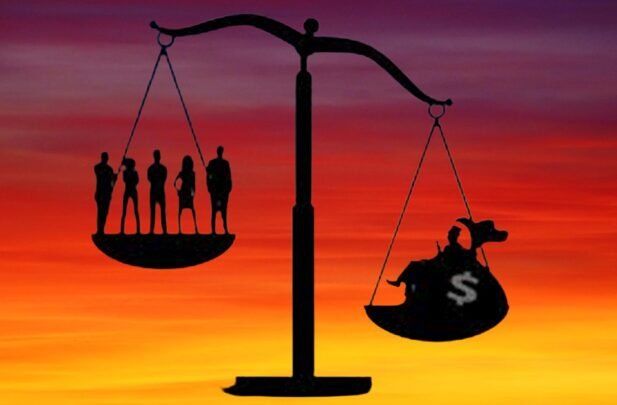
The Social Ladder in India: A Dark Reality
When I was nine years old, I spent countless hours playing video games. Even then, I often thought about how games mirror the complexities of real life. Video games come with rules, levels, and challenges that require skill, strategy, and perseverance to overcome.
In real life, the game adults play—often framed as the chasing of wealth and success—operates on similar principles: choices, instructions, rewards, and consequences.
“You’ll win the ultimate prize if you work hard and make wise decisions,” they say. Yet, as I grew older, I realized that the money game is fundamentally flawed in real life. It isn’t as straightforward as video games where merit always leads to success.
Instead of relying solely on data, charts, and economic statistics, I wanted to explore this concept through real people’s stories. We followed four individuals—each at a different level of this symbolic game, representing varied lifestyles, incomes, and realities within India.
The Starting Line: Level One – Rakesh
Rakesh is a 30-year-old from Meghalaya. Like many rural Indians, his formal education ended at class 12. He has no specialized skills and little experience, two critical disadvantages in the money game.
To provide for his wife and two children, he leaves his home and travels 3,000 kilometers to Bangalore in search of work. His story mirrors millions of Indians who migrate to cities, hoping for better opportunities.
Rakesh gets a security guard position, earning ₹16,000 per month—nearly double what he made back home, but still barely enough to survive.
He works tiring 12-hour shifts daily, sometimes even 24 or 36 hours straight when a colleague falls sick. Sleep and health take a backseat because, as Rakesh puts it, “Do I have a choice?”
His living situation? A modest PG that costs ₹5,500 monthly—35% of his income—but at least it comes with three basic meals, mostly rice. He sends ₹9,000 back home to his family, leaving him with a mere ₹1,500.
This covers emergencies, a few samosas (his only indulgence), and a small internet plan for entertainment—Facebook videos being his escape from reality.
For Rakesh, savings, healthcare, and luxuries are not possible. Any unexpected expense, like a medical emergency, could push him into disabling debt.
His story reflects that of 90% of Indians who earn less than ₹25,000 per month. Yet, despite his struggles, Rakesh dreams of returning home to start a small clothing business. Is it realistic? Perhaps not, but hope keeps him going.
Climbing Up: Level Two – Akhil
At level two, we meet Akhil, a content manager at a fintech start-up in Bangalore, earning ₹8 lakhs annually (₹66,000 monthly).
His life is more comfortable than Rakesh’s, but it comes with its anxieties. Unlike level one, where survival is the focus, Akhil struggles with balancing his aspirations and responsibilities.
His rent is ₹16,000, shared with roommates in a 3BHK apartment near his office. This cost, while significant, pales in comparison to Rakesh’s rent-to-income ratio. Akhil allocates ₹20,000 monthly to support his retired parents, leaving him with ₹30,000.
Grocery expenses stand at ₹5,000, and he occasionally uses convenience services like quick grocery deliveries. To free up time for self-improvement, he hires a house help for ₹4,000.
Akhil invests ₹5,000 monthly into mutual funds, plays football for fitness, and treats himself to occasional luxuries—OTT subscriptions, skincare products, and gaming skins. Even so, unexpected costs, like a wedding, could worry his progress.
Although Akhil earns 3.5 times more than Rakesh, he constantly compares himself to peers earning ₹1-1.5 lakh monthly. The pressure to “level up” keeps him awake at night, despite being in the top 10% of India’s income earners.
Privilege in Play: Level Three – Akash
Akash, an AI engineer earning ₹24 lakhs annually (₹2 lakhs per month), represents level three. His income places him in India’s top 3%, radically shifting his lifestyle, priorities, and financial outlook.
Akash shares a luxurious apartment with friends, contributing ₹56,000 toward rent—28% of his income, proportionally lower than Rakesh’s rent burden. He prioritizes health, purchasing organic groceries and supplements, costing ₹10,000 monthly.
He also hires a cook for ₹5,000, affording him both convenience and nutritional focus.
Akash’s financial strategy includes investments of ₹30,000 monthly, ensuring future security and tax benefits. He can afford leisure—premium gadgets, gym memberships, dining out, and frequent travels.
Despite his higher expenses, Akash comfortably saves a significant chunk of his income. Even in a worst-case scenario, like losing his job, he could sustain himself for several months—a privilege unimaginable at levels one and two.
Most importantly, Akash can access quality mental health services, an opportunity only 7% of Indians can afford. His wealth affords him options—choices that make the game easier to play.
At the Top: Level Four – Suresh
Suresh, a 40-year-old real estate entrepreneur, represents India’s elite—level four. Earning ₹10 crores annually (₹83 lakhs monthly), his wealth surpasses income and revolves around assets, investments, and legacy-building.
Suresh lives in a ₹27-crore villa owns luxury cars, and spends lavishly—₹2 lakhs on housing maintenance, ₹8 lakhs on dining, and ₹5 lakhs on clothing monthly. His expenses extend to exclusive health treatments. He also has access to personal trainers, nutritionists, and therapists.
At this level, wealth brings power. Suresh influences policies, employs teams of financial advisors, and leverages tax loopholes to optimize his wealth. His resources allow him to navigate life in “God mode,” shaping systems that others must endure.

The Shocking Reality of the Money Game
These four stories reveal abnormally different games being played within the same society, governed by unequal rules and opportunities. Rakesh struggles to survive. Akhil strives to climb. Akash enjoys security. Suresh builds empires.
While hard work and ambition can help individuals progress, systemic challenges —education, skill access, and generational privilege—mean that many like Rakesh may remain trapped at level one.
India’s wealth pyramid is shocking. The top 10% control over 80% of the nation’s wealth, while millions are stuck at the base, barely making ends meet. Social mobility, though idealized, remains elusive for most.
We often comfort ourselves with the belief that the world is fair and that good people will be rewarded for their efforts. This bias, known as the “just-world fallacy,” blinds us to the harsh realities of systemic inequality. The wealth game is not just unequal; it is fundamental manipulation.
So, where does that leave us? Hope remains necessary—for without it, there’s little reason to strive for a better future. But as we navigate the game ourselves, we must also acknowledge its flaws and work toward building systems that offer genuine opportunities for all.
Q&A:
Q: Is it possible for someone like Rakesh to ‘level up’ in real life?
A: The chances are stacked against people like Rakesh because of financial barriers and limited access to resources, but it is not impossible. Social mobility necessitates changes and structural changes in along with long hours of work.
Q: How does the money game affect mental health across different income levels?
A: Any income level can have an impact on mental health, and pressures vary depending on one’s place in the money game. The effects are common and complex, ranging from the stress of survival at lower income levels to the worry of maintaining status at higher income levels.
Q: Can policy changes make the money game fairer for everyone?
A: By establishing fair taxes, enhancing access to healthcare and education, and offering equal opportunities, policy improvements definitely help in balancing levels of opportunity. However, achieving actual justice is difficult and needs cooperation from every aspect of society.
Policy changes can certainly help level the playing field by providing equal opportunities, improving access to education and healthcare, and implementing fair taxation. However, achieving true fairness is complex and requires concerted efforts from all sectors of society.
Sources: Aevy TV







































